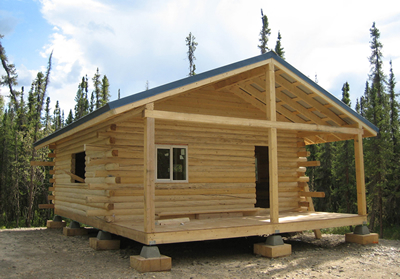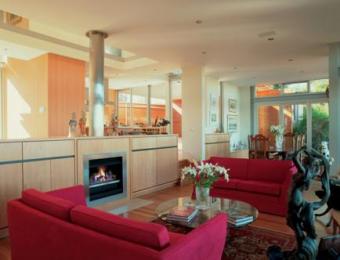What is a log home?
A log home or cabin is a wooden house that has been made from tree logs (as opposed to planks of timber). Some common types of wood used for log homes include white pine, yellow pine, fir and cedar. You might choose a certain type of log because it is more affordable, while some are lighter, some are stronger, and some need less maintenance. Most importantly, each log should be straight and solid.

Why install log walls?
Log homes have a natural, rustic appeal. Log homes are fairly durable, with good resistance to earthquake, strong winds and fire. A well built log cabin has excellent insulating properties which will save you money on your energy bills and preserve natural resources. A log home can also be relatively cheap, depending on where you source your timber. Using trees sourced from your own property will obviously cut down on costs. However, trees play an integral part in the natural ecosystem as well as visually improving the landscape, so you may want to consider the environmental implications along with your budget before deciding to remove trees.
Another option is to use a log kit home or plantation trees. These logs are usually milled and treated which can also impact negatively on the environment - although it is argued that processing logs can be less harmful than the methods used for sourcing other building materials.
How are logs installed?
Log homes may be built from logs that have either been handcrafted or milled. Handcrafted logs are the logs you source yourself. The bark needs to be peeled back and the logs may need to be dried before use. Undried logs will shrink over time and can create maintenance problems. Milled logs are put through a manufacturing process which makes them a similar size and shape. Most milled logs are treated to help remove some of the moisture before installation, and they are often also treated with insecticides. If you are using logs to build because you want a natural home, check which chemicals have been used in the manufacturing process.
Logs can either be left in their original round shape, they can be made square, or they can have a concave shape carved out of one side that assists in stacking the logs on top of one another. To join the logs together and build the walls of your home, a log has a notch carved out of its end. Another log is laid perpendicular on top of the first log in order to fit into the notch. When constructing a log home, it is often best to build the base out of a material that will not be affected by water. Handcrafted logs will often need gaps between the logs sealed up (or chinked) to weatherproof the home.
Maintenance
Log walls can require somewhat more maintenance than walls built with other materials. Log walls need to be inspected at least once or twice each year to make sure they are still solid and watertight. Like timber framed homes, log homes are susceptible to white ant infestation. Many other types of insects like to make their homes in log walls as well. Logs can absorb water, which may cause them to rot. The moisture inside wooden logs dries out over time which causes the logs to shrink, leading to cracks and gaps in logs and in between individual logs.
To prevent and treat these problems, log walls need to be washed and sealed regularly. Insecticide should be applied as required (choose a natural insecticide if you prefer), and any holes need to be closed up with either a commercial or home-made caulking product. Extremely damaged logs can sometimes require replacing.





